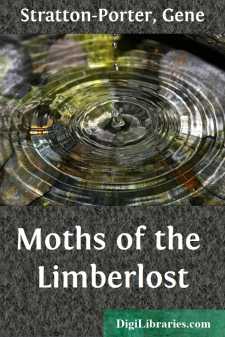Categories
- Antiques & Collectibles 13
- Architecture 36
- Art 48
- Bibles 22
- Biography & Autobiography 813
- Body, Mind & Spirit 138
- Business & Economics 28
- Children's Books 12
- Children's Fiction 9
- Computers 4
- Cooking 94
- Crafts & Hobbies 4
- Drama 346
- Education 46
- Family & Relationships 57
- Fiction 11821
- Games 19
- Gardening 17
- Health & Fitness 34
- History 1377
- House & Home 1
- Humor 147
- Juvenile Fiction 1873
- Juvenile Nonfiction 202
- Language Arts & Disciplines 88
- Law 16
- Literary Collections 686
- Literary Criticism 179
- Mathematics 13
- Medical 41
- Music 40
- Nature 179
- Non-Classifiable 1768
- Performing Arts 7
- Periodicals 1453
- Philosophy 64
- Photography 2
- Poetry 896
- Political Science 203
- Psychology 42
- Reference 154
- Religion 505
- Science 126
- Self-Help 81
- Social Science 81
- Sports & Recreation 34
- Study Aids 3
- Technology & Engineering 59
- Transportation 23
- Travel 463
- True Crime 29
Moths of the Limberlost
Categories:
Description:
Excerpt
CHAPTER I Moths of the Limberlost
To me the Limberlost is a word with which to conjure; a spot wherein to revel. The swamp lies in north-eastern Indiana, nearly one hundred miles south of the Michigan line and ten west of the Ohio. In its day it covered a large area. When I arrived; there were miles of unbroken forest, lakes provided with boats for navigation, streams of running water, the roads around the edges corduroy, made by felling and sinking large trees in the muck. Then the Winter Swamp had all the lacy exquisite beauty of such locations when snow and frost draped, while from May until October it was practically tropical jungle. From it I have sent to scientists flowers and vines not then classified and illustrated in our botanies.
It was a piece of forethought to work unceasingly at that time, for soon commerce attacked the swamp and began its usual process of devastation. Canadian lumbermen came seeking tall straight timber for ship masts and tough heavy trees for beams. Grand Rapids followed and stripped the forest of hard wood for fine furniture, and through my experience with the lumber men "Freckles"' story was written. Afterward hoop and stave men and local mills took the best of the soft wood. Then a ditch, in reality a canal, was dredged across the north end through, my best territory, and that carried the water to the Wabash River until oil men could enter the swamp. From that time the wealth they drew to the surface constantly materialized in macadamized roads, cosy homes, and big farms of unsurpassed richness, suitable for growing onions, celery, sugar beets, corn and potatoes, as repeatedly has been explained in everything I have written of the place. Now, the Limberlost exists only in ragged spots and patches, but so rich was it in the beginning that there is yet a wealth of work for a lifetime remaining to me in these, and river thickets. I ask no better hunting grounds for birds, moths, and flowers. The fine roads are a convenience, and settled farms a protection, to be taken into consideration, when bewailing its dismantling.
It is quite true that "One man's meat is another's poison." When poor Limber, lost and starving in the fastnesses of the swamp, gave to it a name, afterward to be on the lips of millions; to him it was deadly poison. To me it has been of unspeakable interest, unceasing work of joyous nature, and meat in full measure, with occasional sweetbreads by way of a treat.
Primarily, I went to the swamp to study and reproduce the birds. I never thought they could have a rival in my heart. But these fragile night wanderers, these moonflowers of June's darkness, literally "thrust themselves upon me." When my cameras were placed before the home of a pair of birds, the bushes parted to admit light, and clinging to them I found a creature, often having the bird's sweep of wing, of colour pale green with decorations of lavender and yellow or running the gamut from palest tans darkest browns, with markings, of pink or dozens of other irresistible combinations of colour, the feathered folk found a competitor that often outdistanced them in my affections, for I am captivated easily by colour, and beauty of form....










